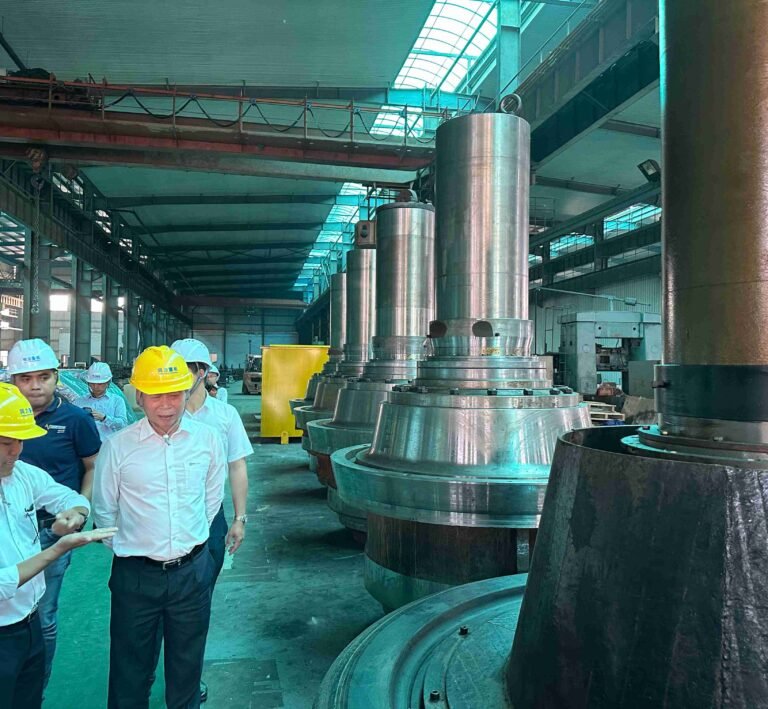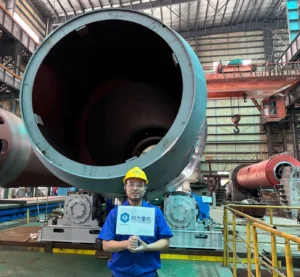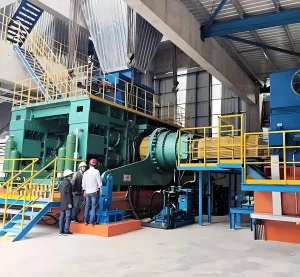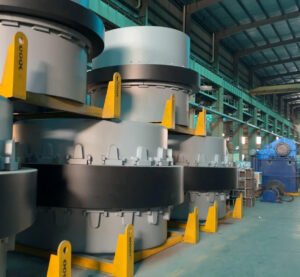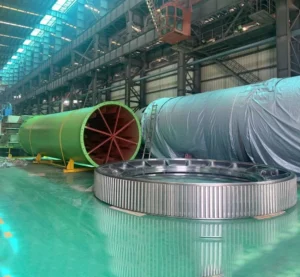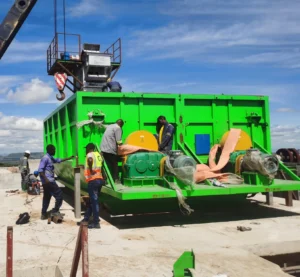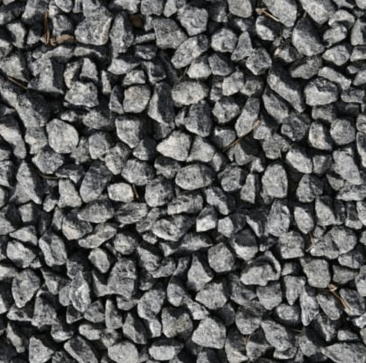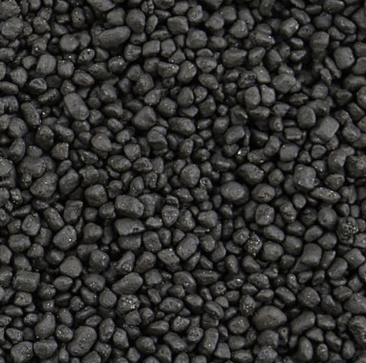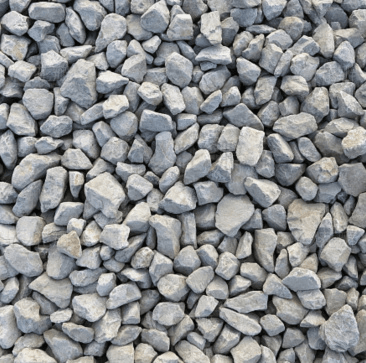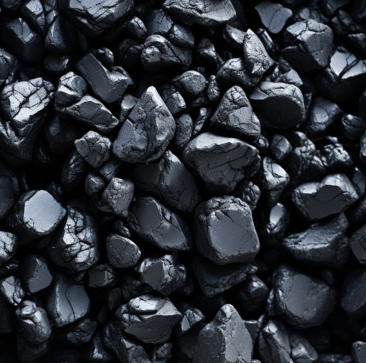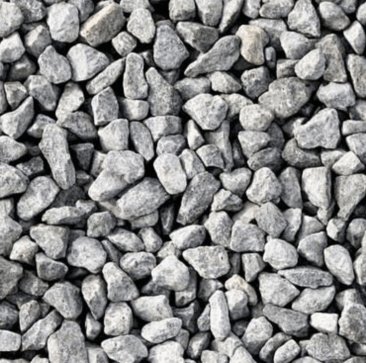-
1. What are the ball mill spare parts provided by TONGLI?
1.Ball mill big girth gear: This is one of the core components of the ball mill transmission system. It is usually installed outside the cylinder and is responsible for transmitting power to the cylinder to drive it to rotate. The material and processing accuracy of the big gear directly affect the operating efficiency and life of the ball mill.
2.Ball mill pinion: The pinion is usually connected to the motor or reducer, meshing with the big gear to transmit power. It is smaller in size, but also requires high-precision manufacturing to ensure smooth meshing with the big gear and reduce wear.3. Ball mill hollow shaft: The hollow shaft is the supporting component of the ball mill cylinder, usually located at both ends of the cylinder. It not only supports the rotation of the cylinder, but also is used for the entry and exit of materials. The design and material of the hollow shaft are crucial to the stable operation of the ball mill.
4. Ball mill ring gear: The ring gear is a key component in the ball mill transmission system, usually connected to the hollow shaft, responsible for transmitting power to the cylinder. It is large in size and requires high-strength materials to withstand large loads.
5. Ball mill steel balls: Steel balls are the grinding media in the ball mill, usually made of high-hardness materials. They roll and collide in the cylinder to grind the material into fine powder. The size and number of steel balls directly affect the grinding efficiency.
6. Ball mill partition plate(diaphragm): The partition plate is used to separate the ball mill cylinder into multiple chambers, each of which can be placed with steel balls of different sizes to meet the grinding needs of different stages. The design of the partition plate helps to improve the grinding efficiency and product quality.
7. Ball mill transmission device: The transmission device includes components such as motors, reducers, couplings, etc., which are responsible for transmitting the power of the motor to the ball mill cylinder. The performance of the transmission device directly affects the operating efficiency and stability of the ball mill.
8. Ball mill bearings: Bearings are important accessories that support the rotating parts of the ball mill and are usually installed at both ends of the cylinder. They bear huge loads and need to have high strength and wear resistance to ensure the long-term stable operation of the ball mill.
9. Ball mill end cover: The end liner is a cast steel part installed at both ends of the ball mill cylinder, mainly used to protect the cylinder end from wear. Its material is usually the same as the hollow shaft, with good wear resistance and impact resistance.
-
2. What are the spare parts and wearing parts of TONGLI vertical roller mill?
1. Grinding roller: The grinding roller is the key component responsible for crushing and grinding the material. Under the pressure of the hydraulic system, it bites the material and crushes it. The appearance of the grinding roller can be summarized as four types: cone roller, drum roller, cylindrical roller and spherical roller. There are both sliced and integral forming types. Its material is usually high chromium cast iron, various alloy steels, etc. These materials have high hardness, good wear resistance and strong toughness, which can meet the working requirements of the vertical mill. In recent years, there are also grinding rollers manufactured by new technologies such as ceramic alloy composite casting to further improve its wear resistance.
2. Grinding disc: The grinding disc is one of the key components of cement vertical mill and slag vertical mill. It is connected to the reducer and rotates at a constant speed to evenly distribute the material on the lining of the grinding disc. It forms the main grinding system with the grinding roller to grind the material. The grinding disc is mainly composed of disc body, liner, pressure block, material retaining ring, scraper plate, wind ring, air guide plate and other parts, which are usually cast with materials such as plain carbon steel and silicon manganese steel.
3. Rocker arm: The rocker arm is one of the core components of the vertical mill. Each set of rocker arms includes an upper rocker arm, a lower rocker arm, a center shaft, a bearing seat and a bearing, etc., which are installed in the bearing seat on the vertical mill bracket. Its main task is to transmit the pressure of the hydraulic cylinder to the grinding roller, so that it is converted into a grinding force on the material bed. The rocker arm is generally made of cast steel, has good mechanical properties and reliability, and is not easy to break.
4. Grinding disc lining: The grinding disc lining is located on the surface of the grinding disc and is in direct contact with the material and the grinding roller. It protects the grinding disc body and improves the grinding efficiency. It also affects the movement trajectory and residence time of the material on the grinding disc. There are two types of grinding disc linings: flat disc type and bowl type. Both are sliced, which are convenient for installation, removal and replacement. Its material is usually made of high hardness and high wear resistance materials, such as alloy cast iron, high chromium cast iron, etc., to resist the wear of the material and the rolling of the grinding roller.
5. Roller sleeve(liner): It is a part that directly contacts the material for grinding. It is usually made of wear-resistant materials such as high-chromium cast iron. Due to constant friction with the material and the pressure of the grinding roller, the roller skin wears quickly and is the main vulnerable part of the grinding roller. The worn roller skin will reduce the grinding efficiency, affect the product quality and output, and needs to be replaced or turned over regularly.
6. Bearing: used to support the rotation of the grinding roller. When working under high load, high temperature and dusty environment, it is easy to have problems such as wear, fatigue, poor lubrication, etc., which may lead to bearing damage. Once the bearing is damaged, it will affect the normal operation of the grinding roller and may even cause the grinding roller to fail to work.
7. Oil sealing: The main function is to prevent lubricating oil leakage and prevent external impurities from entering the bearing. After long-term use, the oil seal will fail due to wear, aging and other reasons, causing lubricating oil leakage, and the bearing will not be sufficiently lubricated, which will aggravate the wear of the bearing and even cause bearing damage.
8. Material retaining ring: located at the edge of the grinding disc, used to control the residence time and thickness of the material on the grinding disc so that the material can be fully ground. The material retaining ring is easily worn due to the long-term scouring and friction of the material, which causes the residence time and thickness of the material on the grinding disc to change, affecting the grinding effect.
9. Air slide: installed under the grinding disc, hot air enters the mill through the wind ring to dry and convey the material. The blades of the wind ring are easily worn under the impact of hot air and materials, affecting the uniform distribution and wind speed of the hot air, and then affecting the drying and conveying effect of the material.
10. Powder classifier blades: The powder classifier classifies the materials through the airflow generated by the rotation of the blades, and selects the finished products that meet the requirements. The powder classifier blades are constantly in contact and collision with the materials, and are prone to wear. Once the blades are worn, the powder selection accuracy will be reduced, and unqualified particles will be mixed into the finished products, affecting the product quality.
11. Spreading disc: located inside the powder classifier, used to spread the material evenly so that the material can be fully dispersed and graded in the powder classifier. The spreading disc will be impacted and worn by the material during operation. The worn spreading disc may not be able to spread the material evenly, affecting the powder selection effect.
12. Seals: including roller seals, hydraulic cylinder seals, pipe seals, etc. After long-term use, these seals will lose their sealing performance due to wear, aging, corrosion, etc., resulting in dust leakage, lubricating oil leakage and other problems, which will not only pollute the environment, but also affect the normal operation of the equipment.
13. Bushing: used to protect shaft components and reduce friction and wear between the shaft and other components. Bushings will be worn during operation, especially at high speed and high load, the wear will be more serious. The worn bushing will increase the gap between the shaft and other components, affecting the stability and accuracy of the equipment.
14. Spacer rings and cover plates: When replacing wearing parts such as oil seals, spacer rings, cover plates and other components may be damaged due to improper operation during disassembly and installation. At the same time, they will also be subject to vibration, impact and other effects during the operation of the equipment, and are prone to fatigue cracks and other problems.
-
3. What spare parts does TONGLI Incineration rotary kiln have?
1. Big gear ring(girth gear): usually made of 42CrMo and other materials, it is the key component that drives the entire cylinder to operate for a long time. It transmits and changes the direction of force, and cooperates with the pinion to realize the rotation of the rotary kiln cylinder.
2. Pinion: connected to the output shaft of the reducer, meshing with the big gear ring, transmitting power to the big gear ring, and then driving the rotary kiln cylinder to rotate. After long-term use, it is easy to wear the tooth surface.
3. Riding Ring: also called rolling ring, divided into rectangular wheel band and box wheel band according to the standard, generally made of cast steel, installed on the rotary kiln cylinder, transfer the weight of the cylinder to the supporting wheel, and roll on the supporting wheel, so that the cylinder can rotate smoothly.
4. Supporting roller(wheel): supports the weight of the wheel band and the rotary kiln cylinder, so that the cylinder can rotate stably. It is usually made of cast steel or cast iron. The surface in contact with the wheel band needs to have sufficient hardness and wear resistance.
5. Bearing housing: used to install the bearings of the support wheel and the stop wheel, provide support and positioning for the support wheel and the stop wheel to ensure that they can rotate normally. It is usually made of cast steel or cast iron and has sufficient strength and rigidity.
6. Kiln head(hood) cover: connects the kiln head end with the equipment of the next process in the process. Its function is to gather the temperature of the clinker to prevent the clinker from overflowing, and send the hot air extracted from the cooler into the kiln under the action of the exhaust fan. It is equipped with a fire-watching hole and an inspection door.
7. Kiln tail smoke chamber: located at the tail of the rotary kiln, connected to the preheater and other equipment, used to collect and transport the smoke exhausted from the kiln, and at the same time play a certain role in locking the wind to ensure the stability of the airflow in the kiln.
8. Feeding device: including feeding chute, feeding spoon, etc., used to feed raw materials into the rotary kiln evenly and stably to ensure the normal transportation and calcination of materials in the kiln.
9. Unloading device: such as kiln head discharge port, cooler, etc., responsible for unloading the calcined clinker from the rotary kiln, cooling and conveying it for subsequent treatment and processing.
10. Reducer(gearbox): used to reduce the speed of the motor and increase the torque to meet the low-speed and heavy-load working requirements of the rotary kiln, ensuring that the cylinder can rotate smoothly and slowly.
11. Motor: Provides a power source for the operation of the rotary kiln. According to the specifications and production requirements of the rotary kiln, select motors of different power and speed.
12. Coupling: used to connect components such as motors, reducers and pinions, and plays a role in transmitting torque, compensating axis deviation and buffering vibration.
13. Kiln head seal ring: commonly used forms include spring graphite block seal, fish scale seal, etc., installed at the kiln head to prevent the leakage of hot air and dust in the kiln, and prevent external air from entering the kiln to ensure the stability of the thermal system in the kiln.
14. Kiln tail seal ring: located at the kiln tail, the function is similar to the kiln head seal, usually using labyrinth seal, radial friction plate seal and other methods to reduce the leakage of air and materials at the kiln tail and improve the thermal efficiency of the rotary kiln.
15. Kiln shell: It is the main structure of the rotary kiln, generally made of steel plate rolled and welded, with refractory materials lined inside, used to accommodate and transport materials, so that they can be calcined at high temperatures and other physical and chemical reactions.
16. Refractory bricks: with high temperature resistance, wear resistance, heat insulation and other properties, built on the inner wall of the kiln shell to protect the kiln shell from high temperature erosion, while ensuring that the heat in the kiln does not dissipate outward, improving heat utilization.
17. Coal injection pipe: installed at the kiln head, used to spray coal powder and other fuels into the kiln, so that the fuel is fully burned in the kiln and provide heat for the calcination of materials.
18. Air duct: used to transport air or hot air, provide oxygen for fuel combustion, or play a role in cooling and ventilation in equipment such as coolers.
19. Bracket and base: used to support and fix the various components of the rotary kiln to ensure the overall stability and installation accuracy of the equipment.
-
4. What are the spare parts of compound fertilizer granulator?
1. Granulator barrel(shell): The barrel is the core component of the compound fertilizer drum granulator, which provides space and carrier for the entire granulation process. Usually, a steel plate with a certain thickness and strength is selected, and it is formed into a cylindrical shape through a rolling process, and then the interface is firmly connected by welding to form a complete barrel structure. Its diameter and length are determined according to the production scale and process requirements. In the production of compound fertilizer, the material is mixed and spherical in the barrel. Therefore, the internal space design of the barrel needs to consider the movement trajectory and residence time of the material to ensure the granulation effect. In order to cope with the characteristics of different materials and production environments, the inner wall of the barrel can be installed with a rubber sheet lining or an acid-resistant stainless steel lining. The rubber sheet lining has good elasticity and wear resistance, which can effectively buffer the impact of the material on the barrel and reduce wear. At the same time, it can also play a certain anti-slip role, so that the material can roll and mix better in the barrel. The acid-resistant stainless steel lining has excellent corrosion resistance and high temperature resistance, and is suitable for processing corrosive materials or granulation processes under high temperature environments.
2. Roller (riding ring) of granulator: Roller is the key component for supporting and rotating the cylinder. It is generally made of cast steel and has high strength and wear resistance. It is tightly installed on the outside of the cylinder, usually in the middle or at both ends of the cylinder, and plays the role of transferring the total weight of the cylinder and the material to the supporting roller. The roller and the cylinder are usually fixed by interference fit or key connection to ensure that there is no relative sliding between the two during the operation of the equipment, thereby ensuring the rotation accuracy and stability of the cylinder. At the same time, the outer surface of the roller needs to be finely processed to ensure good contact with the supporting roller and reduce wear and energy loss.
3. Support rollers: Support rollers are important components that support the rollers and the cylinder. They are usually installed in pairs under the rollers and symmetrically distributed on both sides of the cylinder. They bear the entire weight of the cylinder, rollers and internal materials, and are the key to ensuring that the cylinder can rotate smoothly. Support rollers are usually made of high-quality cast iron or cast steel. These two materials have good strength and wear resistance and can withstand long-term heavy loads. In order to further improve the wear resistance and service life of the support rollers, their surfaces will be quenched to form a wear-resistant layer with high hardness, which effectively resists the friction loss between the rollers and the support rollers. The installation position and angle of the support rollers need to be precisely adjusted to ensure the horizontality of the cylinder and the accuracy of the axis of rotation. During the operation of the equipment, the support rollers and the rollers need to maintain good contact, and the rotation of the cylinder is achieved through rolling friction. In order to reduce friction resistance and wear, the contact surface of the support rollers and the rollers is usually coated with an appropriate amount of lubricating oil. At the same time, it is necessary to regularly check and maintain the wear of the support rollers, and adjust or replace them in time to ensure the normal operation of the equipment.
4. Big gear: Big gear is a key component in the transmission system of compound fertilizer drum granulator. It is usually installed at one end or side of the cylinder and meshes with the pinion to realize power transmission and speed conversion. Big gear is generally made of high-quality alloy steel or cast steel. After precision processing and heat treatment, it has high strength, hardness and wear resistance. Its tooth design and processing accuracy directly affect the stability and reliability of transmission. Common tooth profiles include involute tooth profiles, etc. This tooth profile can ensure that the gear has good transmission performance during the meshing process and reduce impact and noise. The big gear and the cylinder are fixed by key connection or other fastening methods to ensure that the two can rotate synchronously during the transmission process. When installing the big gear, it is necessary to accurately adjust the meshing clearance and center distance between it and the pinion to ensure the efficiency and life of the gear transmission. During the operation of the equipment, the big gear is subjected to large torque and impact force. Therefore, it is necessary to regularly check the wear of the gear tooth surface, the meshing state and the fastening of the connection parts, and lubricate and maintain them in time to prevent gear damage, broken teeth and other faults to ensure the normal operation of the drum granulator.
5. Wear-resistant acid and alkali-resistant rubber lining: First, it can protect the cylinder from direct impact and friction of materials and extend the service life of the cylinder. In the production of compound fertilizers, the grinding of materials and other processes will cause wear on the inner wall of the cylinder. The rubber lining can be used as a buffer layer to resist this wear. Secondly, it is helpful for the movement and granulation of materials in the cylinder. Rubber liners of different shapes can make the materials form a specific movement trajectory and state in the cylinder, so that the materials can be better agglomerated into balls and improve the ball formation rate. In addition, the rubber lining can also play a certain role in corrosion prevention and heat preservation, preventing the cylinder from being corroded by acids, alkalis and other substances in the production of compound fertilizers, and can also reduce heat loss. Features: It has high wear resistance, adopts a special formula and is treated with high-pressure vulcanization, and the wear resistance is greatly improved, and it can withstand the friction of materials for a long time. It has good acid and alkali resistance and can resist the erosion of acids, alkalis and other chemical substances that may occur in the production of compound fertilizers. It has elastic buffering performance, which can greatly reduce the violent impact of materials on the cylinder. At the same time, the rubber itself has a low density, which can reduce the mass of the cylinder, thereby reducing the motor load and saving electricity. In addition, the rubber lining is also easy to install and has low noise.
6. 304 stainless steel pressure bar/plate: Mainly used to fix the wear-resistant and acid-resistant rubber lining, so that it is firmly installed inside the cylinder, ensuring that the rubber lining will not shift or fall off during the operation of the equipment, ensuring that the lining can function normally, and thus ensuring the stable operation of the drum granulator. Features: 304 stainless steel has good corrosion resistance, can resist corrosion in the complex environment of compound fertilizer production, is not easy to rust, and can maintain stable performance for a long time. It has high strength and can provide sufficient pressure to fix the rubber lining tightly on the cylinder, even when the equipment is running for a long time and the material is constantly impacted. It also has good high temperature resistance. In the high temperature environment that may occur in the drum granulator, it can still maintain good physical and mechanical properties and will not be deformed or damaged due to high temperature.
-
5. What are the spare parts of cement high pressure grinding roller press?
1. Grinding Roller: It is the core working part of the roller press, usually composed of two rollers of the same diameter, one is a fixed roller and the other is a movable roller. The surface of the roller is generally welded with wear-resistant materials to enhance its wear resistance and adapt to the extrusion and crushing of materials.
2. Bearings and bearing housing seats: used to support the rotation of the roller and bear the radial and axial loads of the roller during operation. Bearings generally use high-precision, high-load-bearing rolling bearings, and the bearing seats need to have sufficient strength and rigidity to ensure the stable operation of the bearings.
3. Transmission device: including motors, reducers, couplings, etc. The motor provides power for the roller press, and the reducer is used to reduce the speed of the motor output and increase the torque, so that the roller can extrude the material at a suitable speed and force. The coupling is used to connect the motor, reducer and roller to achieve power transmission.
4. Frame: It is the supporting structure of the roller press, usually welded from high-strength steel plates, used to install and fix other components, withstand various forces during the operation of the roller press, and require high strength and stability.
5. Pressurizing device: Common ones include hydraulic systems and spring devices. The hydraulic system applies pressure to the movable roller through oil pumps, cylinders and other components to form a certain extrusion force between the two rollers to crush the material. The spring device uses the elastic force of the spring to provide extrusion force, which has a certain buffering effect.
6. Control cabinet: It is used to control the start, stop, speed adjustment, pressure adjustment and other operations of the roller press. It integrates various electrical components and control circuits to realize the automatic control of the roller press.
7. Monitoring system: Including pressure sensor, speed sensor, etc. The pressure sensor is used to monitor the extrusion force between the rollers in real time so as to adjust the pressure according to the nature of the material and production requirements. The speed sensor is used to measure the speed of the roller to ensure that the running speed of the roller meets the process requirements.
8. Discharging device: used to discharge the material after being extruded by the roller press, usually connected to the subsequent conveying equipment or processing equipment to transport the material to the next production link.
9. Lubrication system: provides lubrication for the various moving parts of the roller press, including bearings, gears, etc., to reduce friction and wear between parts and improve the service life and operating efficiency of the equipment. It is generally composed of an oil pump, an oil tank, an oil pipe, an oil filter, etc.
10. Sealing device: used to prevent leakage of materials and lubricating oil to ensure the normal working environment of the roller press. Common sealing forms include labyrinth seals, oil seals, sealing rings, etc., which are installed between the roller and the bearing seat, between the frame and the moving parts, etc.
-
6. What spareparts does the TONGLI fertilizer dryer&cooling machine have?
1. Drum: It is the main part of the fertilizer dryer, usually made of steel plates rolled and welded, and is cylindrical. The inner wall of the drum can be installed with accessories such as lifting plates as needed to improve the drying efficiency. Its diameter and length are determined according to the production scale and process requirements. A larger drum can handle more materials.
2. Lifting plate: It is installed inside the drying drum. Its function is to lift the material so that the material is fully in contact with the hot air flow during the falling process, increasing the contact area and contact time between the material and the hot air, thereby improving the drying effect. The shape, size and installation angle of the lifting plate will affect the drying efficiency and quality. Common ones include crescent shape, straight plate shape, etc.
3. Burner: It is a key accessory that provides heat source for the dryer. It generates heat by burning fuel (such as natural gas, heavy oil, coal, etc.) to increase the temperature in the dryer, thereby achieving the drying of fertilizer. The power and model of the burners used in fertilizer dryers of different types and sizes are different.
4. Induced draft fan: used to extract the hot and humid air in the drying drum, ensure the circulation of air during the drying process, maintain the negative pressure state in the drying room, so that the hot air flow can smoothly pass through the material layer, and improve the drying efficiency. At the same time, the induced draft fan can also transport the extracted hot and humid air to the dust removal equipment for treatment.
5. Dust collector: used to remove dust generated during the drying process to prevent dust emissions from polluting the environment. Common dust collectors include cyclone dust collectors, bag dust collectors, electrostatic dust collectors, etc. Suitable dust collectors can be selected according to the scale of the dryer, dust characteristics and environmental protection requirements.
6. Large gear: generally installed at one end or side of the drying drum, meshing with the small gear to achieve power transmission and speed conversion. The large gear is usually made of high-quality alloy steel or cast steel, and is precision machined and heat treated to ensure the stability and reliability of the transmission.
7. Temperature sensor: installed in the drying drum or in the hot air flow channel, used to monitor the temperature changes in the drying process in real time, and feed back the temperature signal to the control cabinet so that the operator can adjust the fuel supply or ventilation volume of the burner in time according to the set temperature value to ensure the stability of the drying temperature.
8. Material level sensor: used to detect the filling degree of the material in the drying drum. When the material reaches the set material level, the sensor will send a signal to control the feeding device to stop feeding or adjust the feeding speed to prevent excessive accumulation of materials in the drying drum, affecting the drying effect and equipment operation.
-
7. What are the spare parts of a npk compound fertilizer coating machine?
1. The barrel and supporting system accessories are the main supporting structure of the fertilizer coating machine. The barrel is the core working part of the coating machine. In addition to ordinary medium carbon steel plate materials, some high-end coating machines use 304 stainless steel, which has stronger corrosion resistance and hygienic properties. The inner wall of the barrel is welded with lifting plates of different shapes and angles. The common straight plate and crescent-shaped lifting plates can lift the fertilizer particles when the barrel rotates, so that they can fully contact and mix with the coating agent.
2. The Riding ring is fixed on both sides of the barrel. Common cross-sectional shapes are rectangular and trapezoidal. The rectangular roller has a simple structure and is easy to manufacture. The trapezoidal roller has stronger stability and load-bearing capacity, which is suitable for large coating machines. The roller is fixed to the barrel by high-strength bolts or welding. During installation, its coaxiality and verticality with the barrel must be strictly guaranteed.
3. Coating system is the key part of achieving fertilizer coating. For the liquid coating agent supply device, the storage tank is generally made of plastic or stainless steel, with a capacity between 500L and 2000L. A level gauge is installed on the tank to monitor the coating agent level in real time. Common nozzles include fan-shaped nozzles and cone-shaped nozzles. Fan-shaped nozzles can spray the coating agent evenly on a plane, while cone-shaped nozzles can spray the coating agent in a cone shape with a wider coverage.
4. The motor provides power for the coating machine. Common three-phase asynchronous motors have simple structure, reliable operation, and convenient maintenance. They are widely used in ordinary working environments without special requirements; in some occasions where there are flammable and explosive risks, explosion-proof motors are the key to ensuring safe operation. They can effectively prevent the electric sparks generated by the motor from causing explosion accidents. The motor power varies according to the size and working intensity of the coating machine. Small coating machines mostly use 2.2kW or 3kW motors, and large coating machines may require 7.5kW or even 15kW motors.
5. The reducer(gearbox) plays a vital role in speed change and torque increase in the transmission system. The common cycloid pinwheel reducer has a large transmission ratio, high efficiency and smooth operation, while the gear reducer has a large load capacity and high transmission accuracy. Its transmission ratio is usually between 5-50, and it is selected according to the desired speed of the coating machine. For example, if the motor speed of 1450 rpm is to be reduced to 30-50 rpm, a reducer with a transmission ratio of about 30 may be selected.
6. The coupling is used to connect components such as motors, reducers and transmission shafts to ensure that they rotate synchronously and transmit power. Elastic couplings such as plum blossom-shaped elastic couplings have excellent elasticity and buffering properties, can effectively compensate for the relative displacement between the two shafts, and reduce vibration and impact during equipment operation; rigid couplings such as flange couplings have simple structures and large torque transmission, and are suitable for working conditions with high centering accuracy and low speed of the two shafts.
7. Gears also known as girth gear are also indispensable in the transmission system. They are generally made of high-quality alloy steel such as 40Cr. After quenching and grinding, the hardness and wear resistance of the tooth surface are greatly improved. The modulus is usually between 3 and 8, and the number of teeth is designed according to the transmission ratio and structural layout.
8. The bracket includes the front bracket and the rear bracket, which are welded or cast from medium carbon steel plates and channel steel. It undertakes the important task of supporting the cylinder to ensure that the cylinder can be positioned and rotated smoothly. In order to ensure the strength and stability of the bracket, reinforcing ribs are usually added to its structural design to prevent deformation during equipment operation, and it is firmly fixed to the ground foundation through anchor bolts. The horizontality and verticality of the bracket must be ensured during installation to ensure the installation accuracy of the cylinder.
9. The support wheel is installed on the bracket and cooperates with the roller on the cylinder to support the weight of the cylinder so that the cylinder rotates smoothly. In addition to cast iron and cast steel, wear-resistant rubber or polyurethane materials can also be used. The support wheels made of these materials have better shock absorption and anti-slip properties, which can reduce the wear and vibration of the cylinder. The surface of the support wheel is generally ground or polished to improve the surface finish, reduce the friction coefficient, and ensure good contact with the roller.
10. The feeding and discharging system accessories are related to the feeding and discharging process of fertilizers. The feeding funnel is located at the feeding end of the coating machine. Its shape is generally conical or inverted trapezoidal. The conical feeding funnel allows the material to enter the cylinder more concentratedly, and the inverted trapezoidal feeding funnel has a larger feeding port area, which can increase the feeding speed. The material is usually stainless steel or wear-resistant plastic to prevent the material from corroding and wearing the funnel.
11. The discharge port is set at the other end of the cylinder. Its size is determined according to the output of the coating machine and the particle size of the material. The diameter is generally between 200mm and 500mm. The discharge port may be installed with a discharge valve to control the discharge speed and flow rate, and may also be connected to equipment such as a vibrating screen or a belt conveyor to screen and transport the coated fertilizer particles.
12. Powder coating agent supply device, the powder silo is usually made of carbon steel or stainless steel, with a certain taper to ensure smooth powder feeding. The silo will also be equipped with an arch-breaking device to prevent powder arching and clogging. Feeders include spiral feeders and vibrating feeders. The spiral feeder quantitatively delivers the powder through the rotation of the spiral blade, and the conveying amount is stable; the vibrating feeder uses the vibration of the vibration motor to make the powder feed evenly, and the vibration amplitude can be adjusted according to demand to control the feeding amount.
13. The stirring device is installed in the barrel to fully mix the fertilizer particles with the coating agent. Common spiral blades are generally made of stainless steel. The pitch and diameter of the blades are designed according to the size of the barrel and the characteristics of the material. The larger the pitch, the faster the material is pushed in the barrel. The stirring paddle has various shapes. The paddle-type stirring paddle has a simple structure and is suitable for low-speed stirring. The turbine-type stirring paddle has a strong shear force and can make the coating agent and fertilizer particles mix more evenly.
14. The control cabinet integrates electrical components such as circuit breakers, contactors, relays, and frequency converters. The circuit breaker is used to cut off the circuit to protect the safety of equipment and personnel; the contactor and relay control the start, stop and forward and reverse rotation of the motor; the frequency converter realizes the adjustment of the motor speed to achieve stepless speed regulation of the coating machine. Its control mode is divided into manual control and automatic control. Manual control operates the equipment through buttons and switches, and automatic control uses PLC programming to realize automatic control of the entire production process such as feeding, coating, and discharging.
15. Sensors play a monitoring role in the control system. Common temperature sensors include thermocouples and thermal resistors. Thermocouples have a wide measurement range and fast response speed, and are suitable for high temperature environments; thermal resistors have high measurement accuracy and good stability, and are mostly used for medium and low temperature measurements. Common material level sensors include capacitive and ultrasonic types. Capacitive material level sensors measure material levels by detecting the capacitance change between the material and the electrode, and ultrasonic material level sensors calculate the material height by transmitting and receiving ultrasonic signals.
16. The dust removal mechanism includes a dust removal box and an exhaust fan. The dust removal box is generally made of carbon steel, and multiple layers of filter plates made of glass fiber, polyester fiber and other materials are installed inside, which has good filtering performance. The exhaust fan selects the appropriate air volume and air pressure according to the dust removal amount and ventilation requirements. The air volume is generally between 1000m³/h – 5000m³/h, and the air pressure is between 500Pa – 2000Pa.
17. The protective device includes a protective cover and a guardrail. The protective cover is usually made of steel plates or stainless steel plates to isolate dangerous parts such as transmission parts and rotating parts, and an observation window is set to facilitate operators to observe the operation of the equipment; the guardrail surrounds the film coating machine, and the height is generally between 1.0m and 1.2m to prevent people from operating the equipment incorrectly or getting close to the equipment and causing danger.


